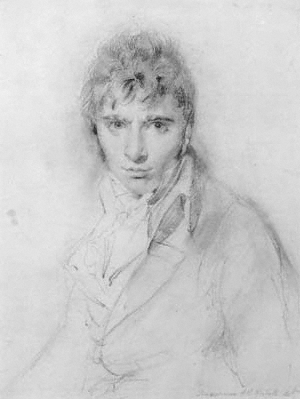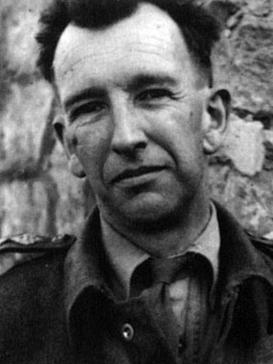
Catherine Greenaway was an English Victorian artist and writer, known for her children's book illustrations. She received her education in graphic design and art between 1858 and 1871 from the Finsbury School of Art, the South Kensington School of Art, the Heatherley School of Art, and the Slade School of Fine Art. She began her career designing for the burgeoning greetings card market, producing Christmas and Valentine's cards. In 1879 wood-block engraver and printer Edmund Evans printed Under the Window, an instant best-seller, which established her reputation. Her collaboration with Evans continued throughout the 1880s and 1890s.

Sir John Gilbert was an English artist, illustrator and engraver.
Fritz Eichenberg was a German-American illustrator and arts educator who worked primarily in wood engraving. His best-known works were concerned with religion, social justice and nonviolence.

John Buckland Wright (1897–1954) was a British printmaker, painter and draughtsman. He worked principally as an etcher and engraver, and was self-taught.

Richard Westall was an English painter and illustrator of portraits, historical and literary events, best known for his portraits of Byron. He was also Queen Victoria's drawing master.

Wood engraving is a printmaking technique, in which an artist works an image into a block of wood. Functionally a variety of woodcut, it uses relief printing, where the artist applies ink to the face of the block and prints using relatively low pressure. By contrast, ordinary engraving, like etching, uses a metal plate for the matrix, and is printed by the intaglio method, where the ink fills the valleys, the removed areas. As a result, the blocks for wood engravings deteriorate less quickly than the copper plates of engravings, and have a distinctive white-on-black character.

Founded as the Brighton School of Art in 1859, the University of Brighton School of Art and Media is an organisational part of the University of Brighton, with courses in the creative arts, visual communication, media, craft and fashion and textile design.
Nora Spicer Unwin was a wood engraver, book illustrator and writer. She was born near London, England, in a family already renowned for publishing and printing circles and for founding three different publishing houses, most notably Allen & Unwin.

Edmund Evans was an English wood-engraver and colour printer during the Victorian era. He specialized in full-colour printing, a technique which, in part because of his work, became popular in the mid-19th century. He employed and collaborated with illustrators such as Walter Crane, Randolph Caldecott, Kate Greenaway and Richard Doyle to produce what are now considered to be classic children's books. Little is known about his life, although he wrote a short autobiography before his death in 1905 in which he described his life as a printer in Victorian London.

John Vernon Lord is an illustrator, author and teacher. He is widely recognized for his illustrations of various texts such as Aesop's Fables,The Nonsense Verse of Edward Lear; and the Folio Society's Myths and Legends of the British Isles. He has also illustrated classics of English literature, including the works of Lewis Carroll and James Joyce.
Monica Poole, was a British wood engraver.

John Farleigh CBE, also known as Frederick William Charles Farleigh, was an English wood-engraver, noted for his illustrations of George Bernard Shaw's work The Adventures of the Black Girl in Her Search for God, which caused controversy when released due to the religious, sexual and racial themes within the writing and John Farleigh's complementary wood engravings commissioned by Shaw for the book. He is also known for his illustrations of D. H. Lawrence's work, The Man Who Died, and for the posters he designed for London County Council Tramways and London Transport. He was also a painter, lithographer, author and art tutor.
Noel Rooke (1881–1953) was a British wood-engraver and artist. His ideas and teaching made a major contribution to the revival of British wood-engraving in the twentieth century.
Józef Sękalski (1904–1972), also known as Josef Sekalski and Juozapas Senkalskis, was a Polish painter, printer, etcher and illustrator who lived and worked in Scotland.

Blair Rowlands Hughes-Stanton was a major figure in the English wood-engraving revival in the twentieth century. He was the son of the artist Sir Herbert Hughes-Stanton. He exhibited with the Society of Wood Engravers, but was more in sympathy with the philosophy of the English Wood Engraving Society, of which he was a founding member in 1925. He co-directed the Gregynog Press from 1930 to 1933 with his wife, Gertrude Hermes.
Margaret Pilkington was a British wood-engraver who was active at the beginning of the twentieth century. She was a pupil of Noel Rooke at the Central School of Art and Design and was a member of the Society of Wood Engravers and the Red Rose Guild. She was awarded the OBE in 1956.

Anthony Colbert (1934–2007) was a British illustrator and painter.

Jack Townend (1918–2005) was a British illustrator and graphic artist. He was best known for his lithographic children's books, his contemporaries include Jan Lewitt, George Him, Hans Tisdall and Barnett Freedman.
Gwenda Morgan was a British wood engraver. She lived in the town of Petworth in West Sussex.
Miriam Macgregor is a British author, illustrator, wood engraver, and fine press compositor. Born in Shillong, Assam, Macgregor was educated at the Guildford School of Art. She began her professional career in the art department of the publisher B. T. Batsford, before becoming a freelance artist. In 1977, she began to work for the fine press publisher, Whittington Press. At the time, all type was set by hand. She still works at the Whittington Press as a compositor and illustrator. She has created images for other fine press publishers, including the Folio Society and Primrose Hill Press. Macgregor is a self-taught wood engraver and member of the Society of Wood Engravers and Royal Society of Painter-Printmakers. She has furnished wood engravings for the horticultural journal, Hortus, in addition to countless wood engravings and pochoir illustrations for books and posters published by the Whittington Press. In addition to the texts she has illustrated, her subjects primarily concern English rural life, farming, architecture, botany, and felines. Macgregor has published several collections of her own images, and curated a collection of contemporary wood engravings of cats, published by Primrose Hill Press in 1999 as Cat cuts.












